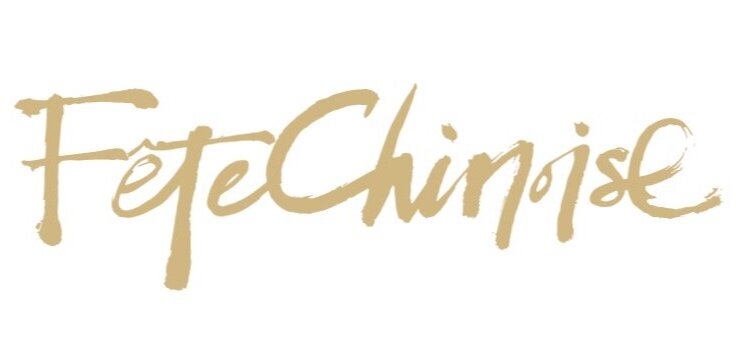Stephanie H. Shih 石函玉:Capturing the Asian Diaspora through Ceramic Groceries
Interviewed by Fete Chinoise Team
Photography: Robert Bredvad, Courtesy of Stephanie Shih
As featured in Edition No. 6 of Fete Chinoise Magazine: Time + Tempo
Ceramic Groceries & Memory 陶瓷雜貨和記憶
“Community engagement has become central to my art practice. I want my work to reflect the experience of the Asian diaspora, and so many parts of this project have been shaped by the stories that people have shared with me. One example of this was when a young mixed-heritage woman reached out to me to buy a ceramic dumpling.“
我一時興起,嘗試了製作陶瓷雜貨雕塑。我在布魯克林工作室製作了我的第一個陶瓷餃子,當時並沒有考慮太多。不久後,一瓶陶瓷黑醋就隨著餃子出現,然後在不知不覺中,我將整個食品儲藏室都做成了作品。而最開始做陶瓷餃子時,我並沒想到它會變成如此有意思的項目。
社區參與已成為我藝術創作的核心。我希望我的作品能反映出海外亞裔的經歷—這個項目跟別人與我分享的私人故事很有關。舉個例子,一位年輕的混血婦女跟我聯繫,她買了我的作品後,不管她到哪個城市,都會給我發一張與陶瓷餃子一起旅遊的照片。當初她買我做的陶瓷餃子時就告訴我,11歲的時候她的華裔母親在還沒能教她如何包餃子前就去世了,由於父親是外國人,她感到自己與自己的文化失去了重要聯繫。但是這個小小的陶瓷餃子讓她想起了她的母親。
When she was just 11, her Chinese mother passed away, and because her father was white, she felt she had lost an important connection to her heritage. The porcelain dumpling reminded her of her mother, who died before teaching her how to fold real ones, and she would send me photos of herself traveling with the dumpling thereafter. “There are often times when people commission ceramic groceries that I’m not familiar with, but I want to make sure I get it just right and do justice to their memory. If I can’t get my hands on the actual product, I’ll do a lot of research on the exact dimensions and variations of the packaging throughout the years. I’ll often go back and forth with the collectors to make sure we’re on the same page.”
即使無法拿到實際使用的產品,也會對多年以來物品包裝的確實尺寸和變化進行深入研究,比如數十年來,康乃馨淡奶或阿華田等產品的包裝都經歷了數十次更新。
因此我一定會跟客戶多溝通一下,去問清楚他們希望我參考哪一年的設計,以確保我們所想像的食品型號是一樣的。普遍來說,他們都會選擇他們童年時期的設計。
sponsored by piaget.
“For example, products like Carnation Evaporated Milk or Ovaltine have gone through dozens of packaging updates over the decades, so I always have a dialogue with the client about which design they’d like me to reference — usually the one from their own childhood. Once, for a Hebrew National Beef Salami commission, the only image I could find of a specific label was from a tiny black-and-white ad in a digital scan of a local Arizona newspaper from 1982!”
Cultural Identity & Heritage 文化認同與文化遺產
“I’d always wanted to bridge my art and my cultural identity but had trouble closing the gap in a way that felt meaningful. I was born and raised in Central Jersey and would describe my upbringing as suburban and dichotomous, always searching as an American and an immigrant. I’m grateful to have visited Taiwan every few years since I was born. I think having such an intimate relationship with multiple cultures gives a person a more complex understanding of the world and how we interact and relate to one another as humans.
Living as an Asian woman in America has really shaped my worldview in terms of gender, race, and class. The politics of identity are complicated and tangled, and I’m still working through my relationship with myself, my family, and my heritage.
Although I recognize that the term “Asian” can be so flattening — the diaspora contains multitudes within it — it can be unifying, too, especially for folks living abroad in places where they feel otherwise unseen. I tend to describe my work as referencing the “Asian American pantry” to speak to the experience of growing up in the United States — the specific products that were imported from Asian and their relationship with American ones they shared shelf space with. What’s unifying about the term “Asian” in this context is the same as what’s flattening about it — we share the experience of being treated the same by a culture of whiteness.”
作為一個亞洲女性,生活在美國確實地影響了我對性別、種族和階級方面的世界觀。身份政治錯綜複雜,我仍在努力探索我與自己、家人和文化遺產之間的複雜關係。
儘管我意識到“亞裔”一詞可以很扁平化(其實亞裔包含了許多不同族裔),但它也有統一的能力,尤其對於居住在原本不被外國人放在眼裡的地區而言。我傾向於將我的作品視為“亞裔美國人食品儲藏室”,以講述我們亞裔人士在美國共同的成長經歷—從亞洲進口的特定產品,以及與它們共用貨架空間的美國產品的關係。在這種情況下,“亞裔”一詞的統一之處與扁平化的含義相同,我們分享的經驗是我們在白人文化(white culture)裡受到的同等對待。
Current Projects 現今的工作
“Right now, I’m working on a series of soy sauce bottles from across the Asian diaspora that will be part of a solo show in New York (though, with the current pandemic, it’s unclear when that’ll be scheduled). Brands from at least 12 different countries will be represented, all of which were crowd-sourced from my Instagram followers.
My practice was much more adaptable and resilient than I expected. Despite the fact that I’ve moved my studio into my apartment and no longer work in a bustling community of other artists, I’ve been able to carry on making my work. In fact, it’s the art that has kept me going through this crazy and often devastating time during the pandemic.
To aspiring artists, I’d like to encourage you with the following words. You can’t really plan for a career as an artist because it’s never going to be what you expect. The most important thing is just to make your work, and let what happens happen. In time, your story will unfold.”
目前,我正在製作一系列來自亞洲僑民的陶瓷醬油瓶。這些陶瓷醬油瓶將作為紐約個展的一部分(不過,由於當前的疫情,可能會延遲開展)。來自至少12個不同國家的品牌將會呈現出來。這個項目裡的品牌都是由我社交媒體的關注者所提供的。我的藝術工作比我預期的要靈活得多,並且更具彈性。
儘管我已經將工作室搬到我私人公寓裡了,並且不再在其他藝術家一起在工作室忙碌,但我仍然能夠繼續創作自己的作品。實際上,正是工作使我度過了疫情期間的時光。
對於有抱負的藝術家,我想分享幾句鼓勵。您無法預知是否會將藝術家作為職業,因為它永遠不會是您所預期的,最重要的是要繼續做您的藝術品,讓命運帶領您。隨著時間的流逝,您的故事終將展開。

















Every special moment deserves a look that feels effortless, stylish, and a little unforgettable. From sun-drenched garden parties to sparkling evening soirées, this chapter brings you curated outfits, accessories, and styling tips to help you shine with confidence. Think romantic florals, bold statement pieces, and modern twists on classic elegance: each look designed to celebrate the occasion, the season, and, most importantly, your own unique style.